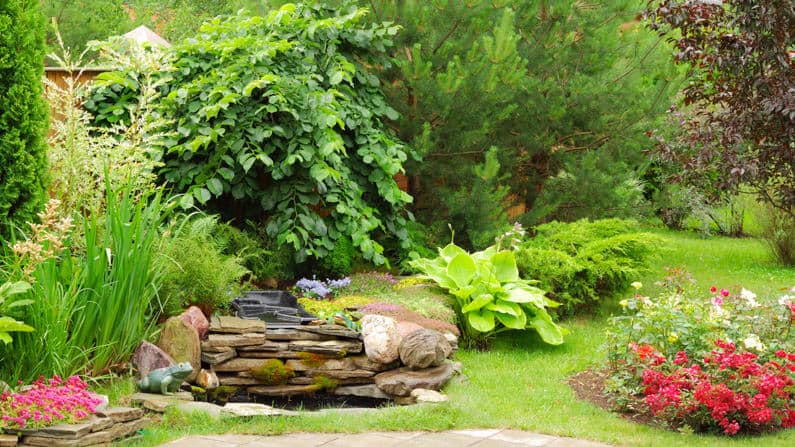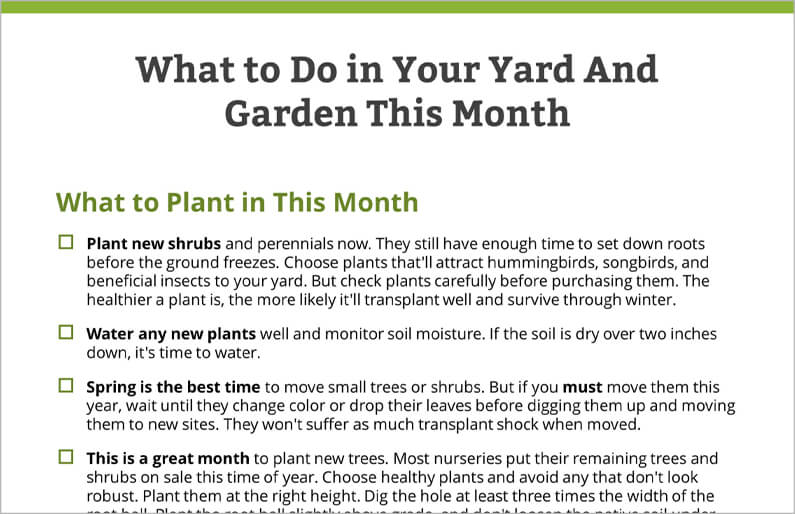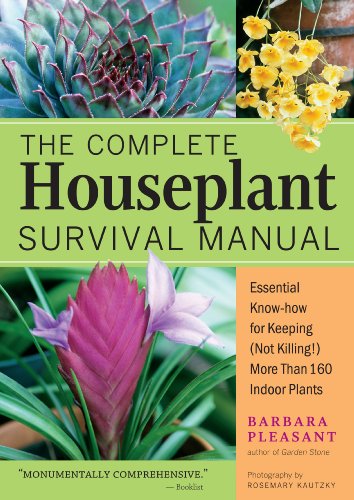May Gardening: What You Need to Do This Month
Even though the spring equinox was a while ago, May is the month when spring really arrives!
Soon the warm days will outnumber the cool ones. You’ll be able to get outdoors more often to get in the garden.
There is so much to plant and do in the garden this month, from sowing vegetable seeds directly into the garden to keeping plants tidy.
Keep reading for a full list of what to do in the garden in May.
As a bonus for joining my weekly newsletter, download a free gardening in May checklist. You’ll be sure to get the right things done this month!
Heads up: If you buy something after clicking a link in this post, I’ll earn a small commission. I only link to products I’d recommend to my best friend.

May gardening maintenance tasks
- Weeds will come back in full force in May. It’s important to properly identify your weeds, so you know what weed you’re dealing with. And a good weed encyclopedia is a useful addition to your garden library.
- Pull tiny weeds as soon as you see them. To get larger weeds with taproots, soil hydration is key. Water them well so that they’ll pop out easily, roots and all.
Related: Use google lens to identify plants, including weeds!
My favorite weeding tools
Prices last updated on 2024-04-17 at 09:35
- Apply protective fungicidal sprays to Apples, crabapples, and hawthorns susceptible to rust disease when these trees bloom.
- Begin fertilizing annuals grown in pots. Fertilize about every two weeks. Use a fertilizer with a 3-1-2 ratio of N-P-K. Annuals don’t need a lot of phosphorus to bloom, and won’t bloom more with more phosphorus than they need. Always water the soil in your pots before fertilizing.
- Prune early flowering shrubs, such as forsythia, viburnum, lilac, small magnolias, rhododendrons, and azaleas after blooms have faded. Don’t wait too long, however, or you’ll prune off next year’s blooms. Use July 4th as the cut-off date.
- Put tools away at the end of the day. Clean them and hang them up, so they’re ready to use and easy to find when you need them.
- Remove suckers from trees and shrubs. Suckers are woody shoots that sprout straight up from fruit tree branches, and from the bases of trees, shrubs, and roses. Snap or cut them off as they appear.
- Summer is a great time to spot and prune off dead branches on shrubs. Dead branches don’t have leaves!
Related download: FREE yard maintenance checklist.
My favorite pruning books and tools
Prices last updated on 2024-04-17 at 00:02
- If spring rains have been sparse, and your soil is dry, begin irrigating.
- If you’re going on vacation this summer, now is a good time to make a plan for watering your plants while you’re away.
- Check your sprinklers. Turn your sprinkler system on and check first for clogged, misaligned, and broken heads. Then check for even coverage, making sure that taller plants don’t block water to shorter ones.
- Don’t have a sprinkler system? You can control your hose-connected sprinklers with this wifi RainPoint sprinkler timer.
- Water newly planted perennials, shrubs, and trees frequently. Established plantings typically do well on an inch of water per week, but newly planted plants need more.
- Irrigate at night to conserve water. Generally, there is less wind, and evaporation losses are less.
- Consider installing drip irrigation in your garden to conserve water.
Related: How to create a low-maintenance garden.
Learn the basics of drip irrigation from the Fine Gardening channel:
- Trees with a history of borer problems should receive their first spray now. Repeat twice at 3-week intervals.
- Edge your garden beds. A clean edge looks so much better where the bed meets the turf.
- Protect Ash trees from the Lilac/ash borer around the first of May.
- Add to, aerate, and moisten your compost pile to speed decomposition.
Here’s how to make gardening easy this month… Get a FREE gardening checklist for May when you join my newsletter. It’s everything you need to do in May.
May lawn care schedule
- Apply post-emergence broadleaf weed controls now if needed.
- Watch for sod webworms, if they’re a problem where you live.
- If you have a mulching mower leave grass clippings on the lawn to return nutrients to your soil and reduce your fertilizer needs by a quarter.
- If you’re trying to sprout grass seed, don’t use a pre-emergent weed killer in the same area.
- Fertilize your bluegrass lawn in mid-May if necessary. (Late fall is the best time to fertilize). Use one-half pound of nitrogen per 1,000 square feet. Buffalo grass or Blue Gramma lawns don’t need fertilizer at this time.
Related: What can I plant in June?
- Monitor your lawn for weeds and hand pull or spot treat accordingly.
- Control broadleaf weeds in the lawn when temperatures are between 60-80°F. Follow the label and stop the use of broadleaf herbicides once the temperature is above 85°F.
- Lawns maintained at the correct height are less likely to have disease and weed infestation. Kentucky bluegrass and tall fescue should be mowed at two or three inches in height. Mow frequently, removing no more than one-third of the blades at a time.
- Change the way you water your lawn. Let the condition of your grass and soil be your guide to irrigation, not the cycle on your watering system or the number of days since the last watering. Use a screwdriver to probe the soil. If the probe is moist when pulled from the soil or if it’s easy to push to a depth of three to four inches, the lawn probably doesn’t need watering.
- Monitor your lawn for damaging turfgrass insects. In areas previously damaged, consider a preventative (systemic) insecticide.
- Apply lime to your lawn if your soil test indicates that you need to do so based on your pH.
My favorite lawn care books
Prices last updated on 2024-04-17 at 01:27
Garden planning and journaling in May
- When you visit botanical gardens and arboretums, take your camera and notepad with you. Think about how you can make changes in your landscape based on what you saw.
- Plan your landscaping projects on paper first. Be sure you know the mature size (width and height) of each plant and allow them room to grow to that size. And be sure you know how much sun that area gets before choosing plants.
- Choose flowering trees and shrubs for their size, color, and bloom time.
- To attract more birds to your yard, choose shrubs and trees that produce fruit.
- Keep weather records along with gardening records in your garden journal. The most important things to record are daily minimum and maximum temperatures, precipitation, cloud cover, and frost.
- Make a note of the locations where you’ve planted new perennials plants.
- Once everything has sprouted make notes of any bare spots that could be filled with new plantings.
Gardening in May for wildlife
- Watch for fireflies on warm nights (if you have them where you live). Both adults and larvae are important predators. Collecting may reduce this benefit.
- Provide a source of dripping water for migrating birds. The May migrants — warblers, tanagers, orioles, and buntings — are all attracted to shallow pools and the sound of dripping water.
- Spray emerging plants with repellent sprays if rabbits and deer have been a problem. Be sure to reapply after a rainfall.
- Keep your hummingbird and oriole feeders clean and filled with fresh food. Sugar water goes bad quickly — plan to change the food every 2-3 days.
- Report monarch butterfly sightings to Journey North.
- Replace your winter suet with no-melt suet or bring your suet feeder in for the season.
- Report insect pests to The Big Bug Hunt. They’re creating a predictive system that will send you alerts when pests are headed your way.
- Record hummingbird activity and sightings.
Related: Leggy seedlings vs. normal.
Attract wildlife to your garden with these books:
Prices last updated on 2024-04-17 at 09:38
May houseplant care
- Take houseplants and overwintered tender annuals and tropical outdoors when your nights will remain above 50 degrees. Most prefer only direct morning sun. Most houseplants brought outside prefer a bright spot shaded from the afternoon sun. Indoor plants moved outside for the summer are very susceptible to scorch and sunburn. Acclimate your plants gradually to avoid setting them back.
- Cut back leggy houseplant growth, especially vining plants.
My favorite houseplant books
Prices last updated on 2024-04-17 at 00:02
Is May a gardening month?
May is one of the best months to be out in the garden. Man, it feels like forever since it was warm enough to start gardening! Everyone’s probably itching to get out there and plant their tomatoes – I know I am!
Is it too late to start a garden in May?
Wondering if it’s too late to get your garden going? Don’t worry – usually, it’s not! April and May are usually the best times to plant your veggies. But don’t fret if you’ve missed those months – there are still plenty of options to get your garden off the ground! Here’s what to plant this May.
Download your free May garden checklist
You’ll always know what to do when!
Join my weekly-ish newsletter, and as a bonus, you’ll get a printable May gardening to-do list! Click here to download and subscribe.
Here’s a sneak peek of your checklist:

Download the May gardening checklist now. You’ll be sure to get the right things done in your garden every May!





















